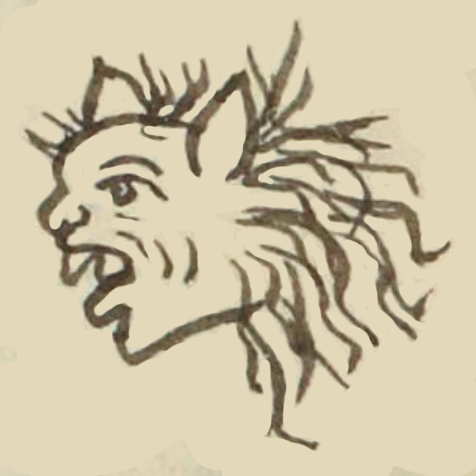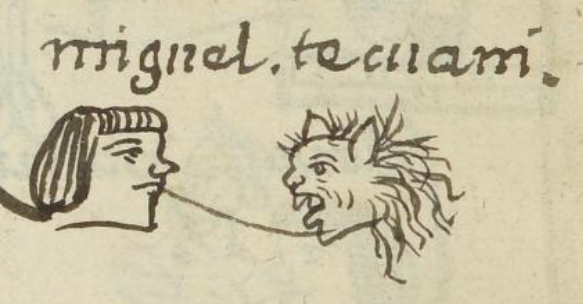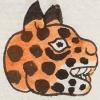Tecuani (MH732r)
This black-line drawing of the simplex glyph for the personal name, Tecuani (literally, "People-Biter," or "Wild Animal"), is attested here as a man's name. The glyph shows a profile view of the head of a ferocious animal in profile and facing left. The animal's eye is open, his mouth is open, and large teeth protrude.
Stephanie Wood
Jaguar is often the contemporary translation for tecuani, and most glyphs show animals that look like jaguars. Ocelotl is another name for jaguar, and glyphs of the ocelotl are very similar to glyphs for the tecuani.
Stephanie Wood
1560
Jeff Haskett-Wood
jaguares, animales silvestres y feroces, nombres de hombres

tecuani, ferocious wild animal, literally one that bites people, https://nahuatl.wired-humanities.org/content/tecuani
cua, to eat or to bite, https://nahuatl.wired-humanities.org/content/cua
te-, nonspecific human object prefix (people, or someone), https://nahuatl.wired-humanities.org/content/te
Animal Silvestre, o Jaguar
Stephanie Wood
Matrícula de Huexotzinco, folio 732r, World Digital Library, https://www.loc.gov/resource/gdcwdl.wdl_15282/?sp=542&st=image
This manuscript is hosted by the Library of Congress and the World Digital Library; used here with the Creative Commons, “Attribution-NonCommercial-ShareAlike 3.0 License” (CC-BY-NC-SAq 3.0).







